The Ingredients : Flour
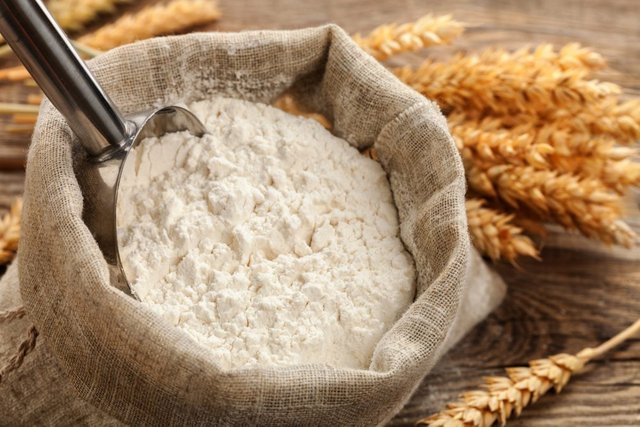
Flour is a powder made by grinding raw grains or roots and used to make many different foods. It is most commonly made from wheat, but also corn, rye, barley and rice, amongst many other grasses and even non-grain plants.
Flour is always based on the presence of starches, which are complex carbohydrates.
Flour from other sources is available, identified according to its grain source. The properties of wheat flour vary according to the type of wheat, milling procedures, and treatment applied after milling.
Flour milling involves the separation of the endosperm, which is about 83 percent of the kernel, from other parts of the kernel, that is, bran and germ. The processing involves tempering, grinding, and sifting the large chunks of endosperm or "middlings" to yield the flour which, in the United States, will represent about 72 percent of the wheat kernel. By processing, size classification is achieved as flour streams. The streams include:
- Straight flour—All the flour that can be milled from a wheat
blend, or 72 percent of the wheat kernel which equates to 100
percent separation. - Long patent flour—90 to 95 percent separation.
- Medium patent flour—80 to 90 percent separation.
- Short patent flour—70 to 80 percent separation.
- Short family or first patent flour—60 to 70 percent separation.
- Extra short or fancy patent flour—40 to 60 percent separation.
- Clears—Portion of straight flour remaining after removal of patent
streams.
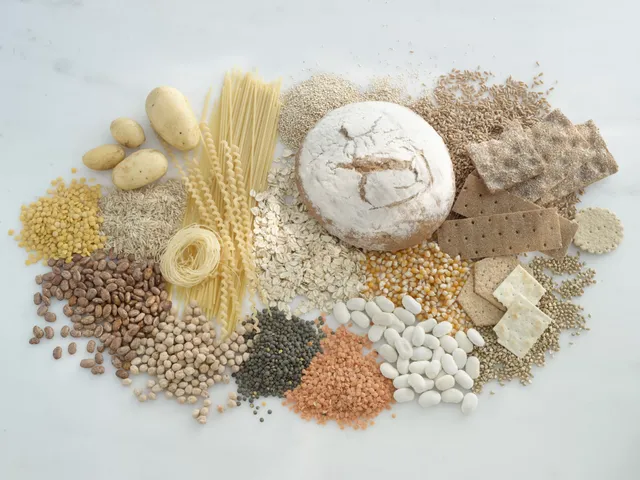
HOW THE STARCHES FORMING DOUGH ??
Starches absorb liquids and provide structure to baked goods. There are two
gluten-forming proteins in wheat flour: glutenin and gliadin.
- Glutenin provides strength, elasticity, and gas-trapping properties to dough.
- Gliadin provides extensibility (the ability to stretch).
Technically, there is no gluten in flour, only the gluten-forming proteins. When you add water to wheat flour and agitate or mix them, gluten is formed. When dough is properly developed, a web of gluten permits the dough to be shaped and expand during rising or baking (extensibility), yet controls the expansion and maintains the desired shape (elasticity).
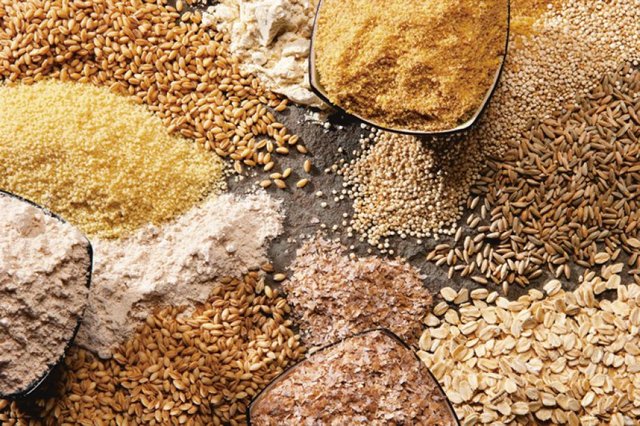
While there's many variety flour from across the regions, Flour properties depend upon the type of wheat that society consumed, which is classified
as Durum, hard and soft ;
Durum has a substantial amount of protein; however, the balance of glutenin
and gliadin is skewed, resulting in more extensibility and less elasticity, making it
better for pasta than pastry. It is used to make bread, but in conjunction with other
types of wheat flour.Hard wheats are high in protein and the resulting flours
have a high protein content and form a tenacious, elastic gluten with
good gas-retaining properties and high water absorption capacity
which makes it suitable for yeast-leavened bread.Soft wheats are low in protein and the resulting flour has poor gas-retaining properties and
low water absorption capacity which makes it suitable for chemically leavened cakes and pastries.
The protein content of the flour is important because it forms the protein complex termed gluten when water and flour are kneaded together.
Different flours are used for different purposes. all based on how much gluten percentage of certain flour type.
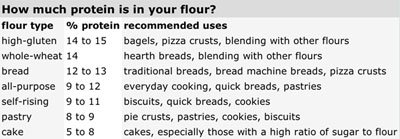
the more protein in certain flour is , the harder the texture of the product and more easier to form a dough
less protein, more softer texture of the product and yet it's has certain limit to form into dough .
WHAT ABOUT THE ALL-PURPOSE FLOUR ??
Plain white flour blended from hard and soft wheat flours containing a medium amount of gluten. moderate protein content in the 9 to 12 percent range. it does not serve a specific product while it purpose to maintain it's versatility, its good for everything and good for nothing. although the specificaions of all purpose flour may vary by geographic regions and tradition. best to use this product with a instruction from it's manufacturer itselfWHAT ABOUT THE GLUTEN-FREE FLOUR ??
Most products are made from white or wheat flour. While unproblematic for many, people with celiac disease, non-celiac gluten sensitivity or those avoiding gluten for other reasons should not consume most types of flour with gluten.
There is a wide variety of Gluten-free flours available today, made from all sorts of grains, nuts and starches from Almond Flour, Buckwheat Flour, Corn Flour, Sorghum Flour, Arrowroot Flour, Brown Rice Flour, Coconut Flour, Tapioca Flour and many from across regions.
It's better to consult the specific recipe or packaging for information on how to use or substitute gluten-free flour for wheat flour in your favorite baking recipes.
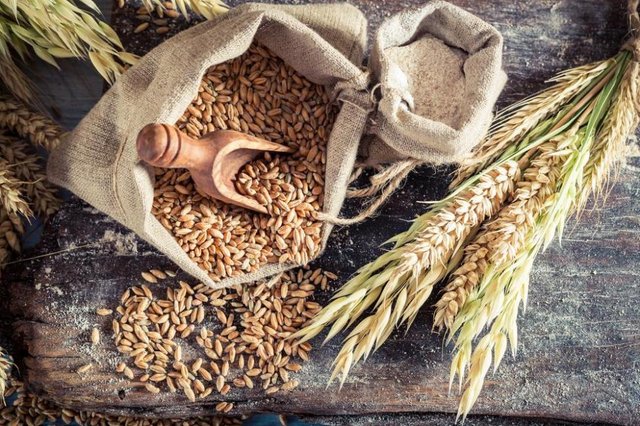
Source articles and photos :
https://bit.ly/2ELTXLc (healthline.com)
https://bit.ly/2H0q644 (vincentcatala.fr)
https://bit.ly/2TkUQDv (wikipedia.com)
https://bit.ly/2HeaLvP (finecooking.com)
https://bit.ly/2ExC9lD (upi.com)
https://bit.ly/2ISVQtH (foodexecutive.com)
https://bit.ly/2XEnzl5 (wellthy.care)
https://bit.ly/2TvPnJ4 (verywellhealth.com)
Dictionary of food Ingredients (Robert S. Igoe, MS, MBA)
The Pastry Chefs (Mitch Stamm)
Dear friend, you do not appear to be following @artzone. Follow @artzone and get added to our voting list for valuable up-votes!
done